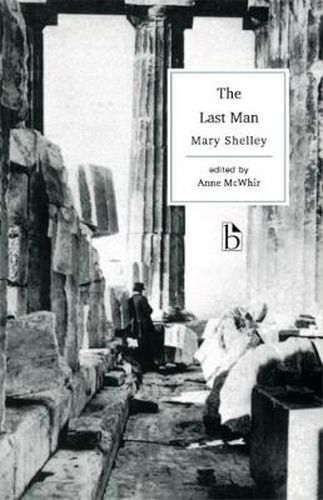Readings Newsletter
Become a Readings Member to make your shopping experience even easier.
Sign in or sign up for free!
You’re not far away from qualifying for FREE standard shipping within Australia
You’ve qualified for FREE standard shipping within Australia
The cart is loading…






Mary Shelley’s third published novel, The Last Man, is a disillusioned vision of the end of civilization, set in the twenty-first century. The book offers a sweeping account of war, plague, love, and desolation. It is the sort of apocalyptic vision that was widespread at the time, though Shelley’s treatment of the theme goes beyond the conventional; it is extraordinarily interesting and deeply moving.
If The Last Man is in some sense a conventional text of the period, it is also intensely personal in its origin; Shelley refers in her journal to the last man as her alter ego, the last relic of a beloved race, my companions extinct before me. The novel thus develops out of and contributes to a network of story and idea in which fantasy, allusion, convention, and autobiography are densely interwoven.
This new version of the first edition (1826) sets out to provide not only a thoroughly annotated text, but also contextual materials to help the reader acquire knowledge of the intellectual and literary milieu out of which the novel emerged. Appendices include material on the last man as early nineteenth-century hero, texts from the debate initiated by Malthus in 1798 about the adequacy of food supply to sustain human population, various accounts of outbreaks of plague, and Shelley’s poems representing her feelings after the death of her husband.
$9.00 standard shipping within Australia
FREE standard shipping within Australia for orders over $100.00
Express & International shipping calculated at checkout
Stock availability can be subject to change without notice. We recommend calling the shop or contacting our online team to check availability of low stock items. Please see our Shopping Online page for more details.
Mary Shelley’s third published novel, The Last Man, is a disillusioned vision of the end of civilization, set in the twenty-first century. The book offers a sweeping account of war, plague, love, and desolation. It is the sort of apocalyptic vision that was widespread at the time, though Shelley’s treatment of the theme goes beyond the conventional; it is extraordinarily interesting and deeply moving.
If The Last Man is in some sense a conventional text of the period, it is also intensely personal in its origin; Shelley refers in her journal to the last man as her alter ego, the last relic of a beloved race, my companions extinct before me. The novel thus develops out of and contributes to a network of story and idea in which fantasy, allusion, convention, and autobiography are densely interwoven.
This new version of the first edition (1826) sets out to provide not only a thoroughly annotated text, but also contextual materials to help the reader acquire knowledge of the intellectual and literary milieu out of which the novel emerged. Appendices include material on the last man as early nineteenth-century hero, texts from the debate initiated by Malthus in 1798 about the adequacy of food supply to sustain human population, various accounts of outbreaks of plague, and Shelley’s poems representing her feelings after the death of her husband.